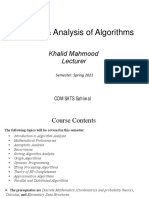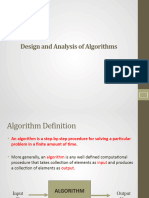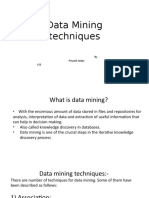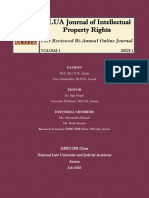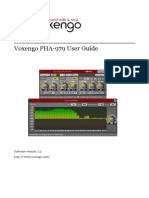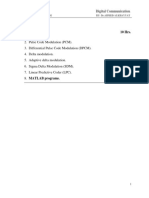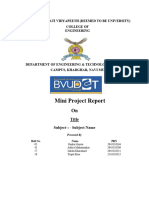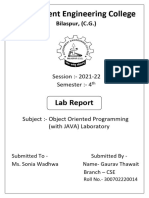0% found this document useful (0 votes)
20 views35 pagesWeek-1 Intro To Algorithm, Complexities
The document outlines a course on the design and analysis of algorithms, emphasizing advanced data structures and algorithmic techniques. It includes references to key textbooks, project expectations for undergraduate students, and the importance of algorithm efficiency and correctness. Additionally, it discusses various algorithm analysis methods, including asymptotic notation and efficiency measurement.
Uploaded by
Haisam KhaleeqCopyright
© © All Rights Reserved
We take content rights seriously. If you suspect this is your content, claim it here.
Available Formats
Download as PPTX, PDF, TXT or read online on Scribd
0% found this document useful (0 votes)
20 views35 pagesWeek-1 Intro To Algorithm, Complexities
The document outlines a course on the design and analysis of algorithms, emphasizing advanced data structures and algorithmic techniques. It includes references to key textbooks, project expectations for undergraduate students, and the importance of algorithm efficiency and correctness. Additionally, it discusses various algorithm analysis methods, including asymptotic notation and efficiency measurement.
Uploaded by
Haisam KhaleeqCopyright
© © All Rights Reserved
We take content rights seriously. If you suspect this is your content, claim it here.
Available Formats
Download as PPTX, PDF, TXT or read online on Scribd
/ 35
